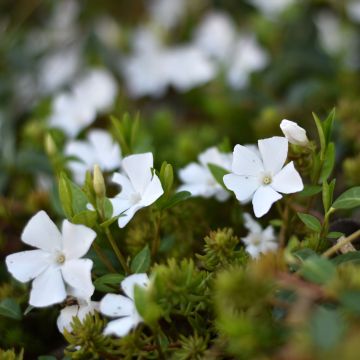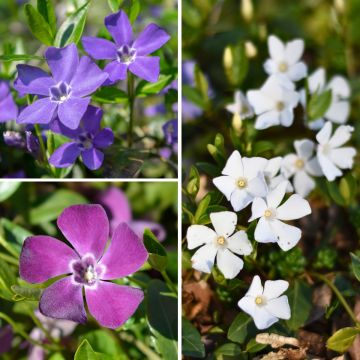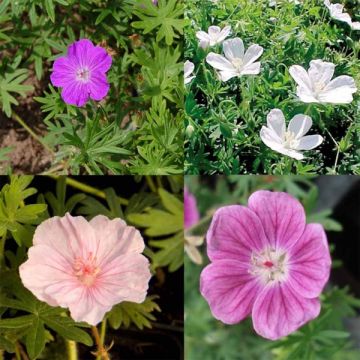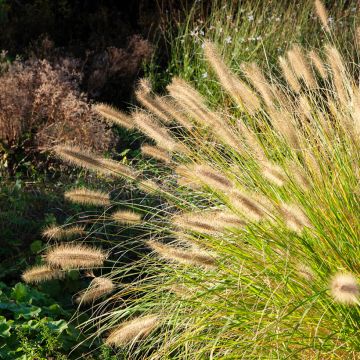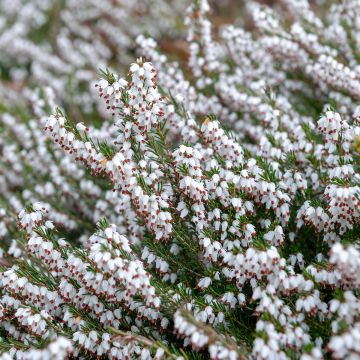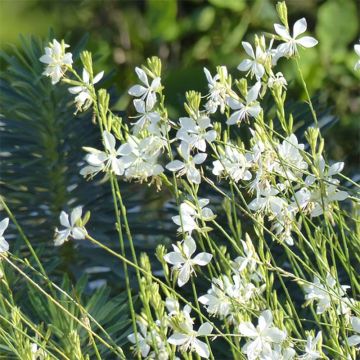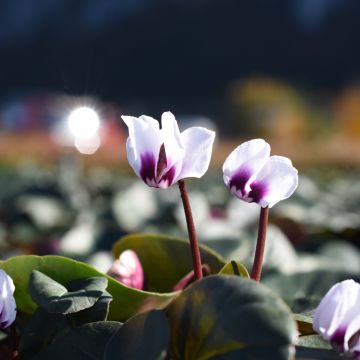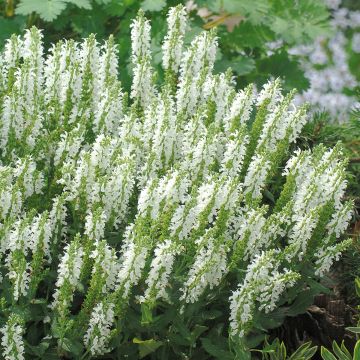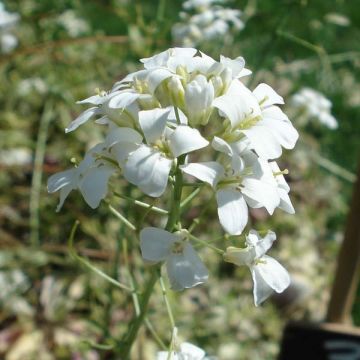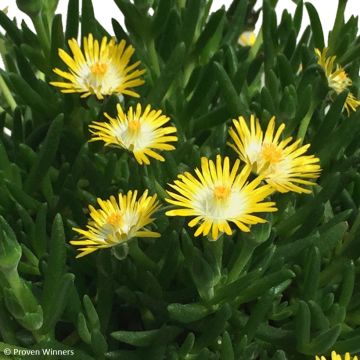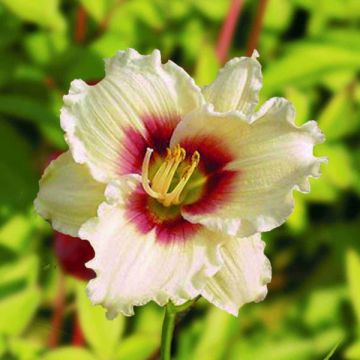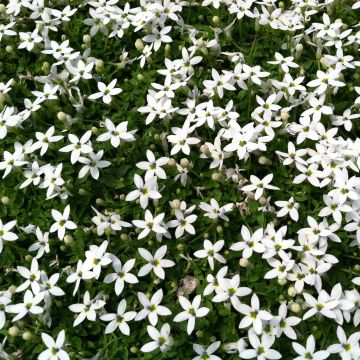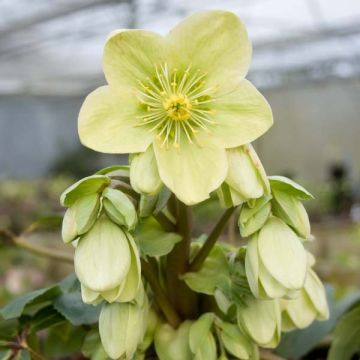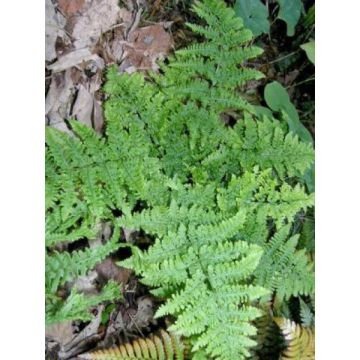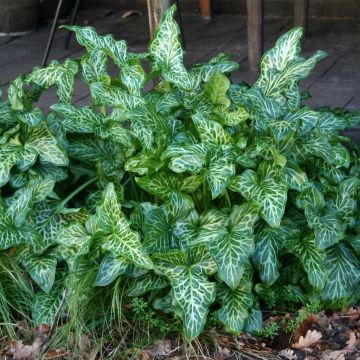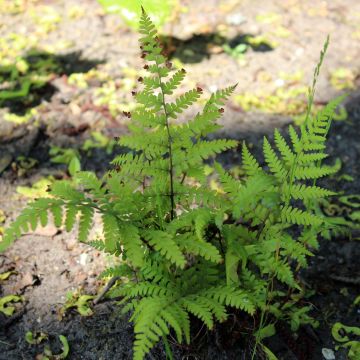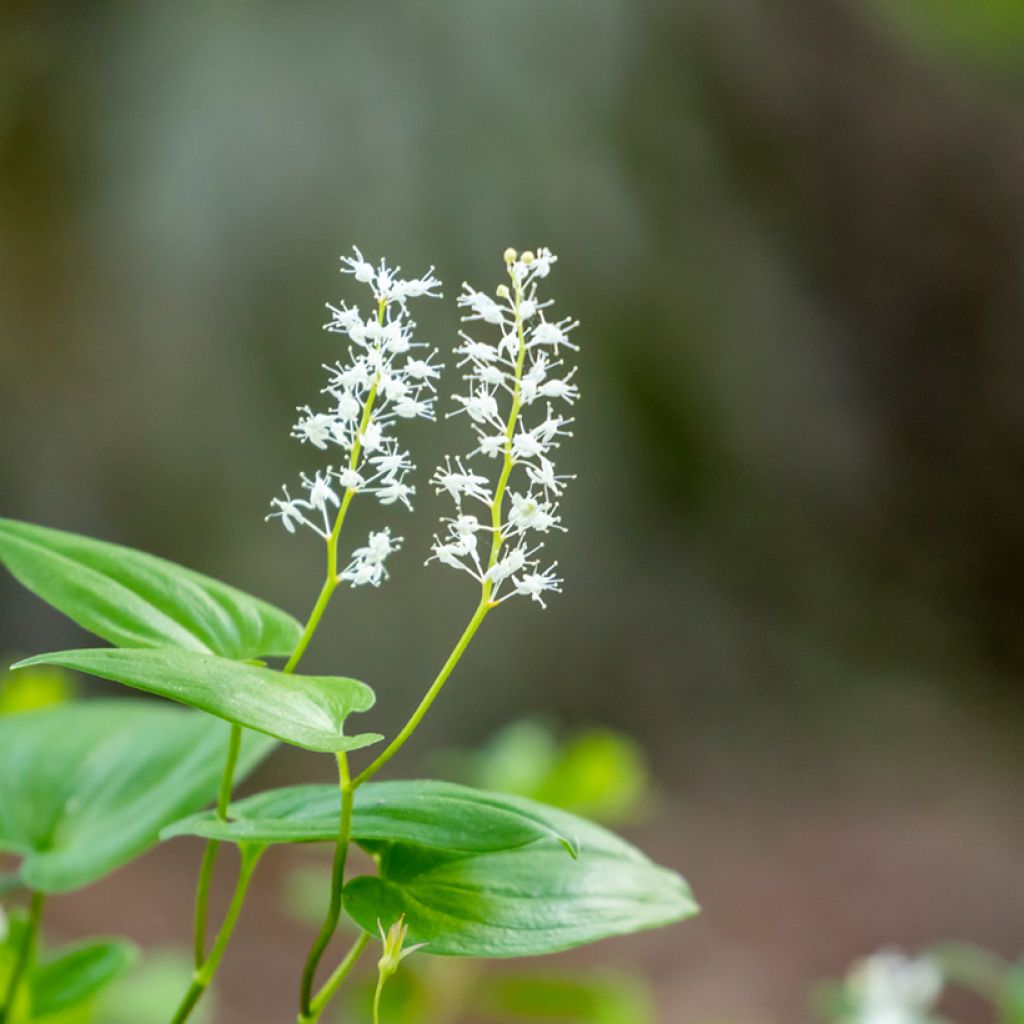

Maianthemum bifolium
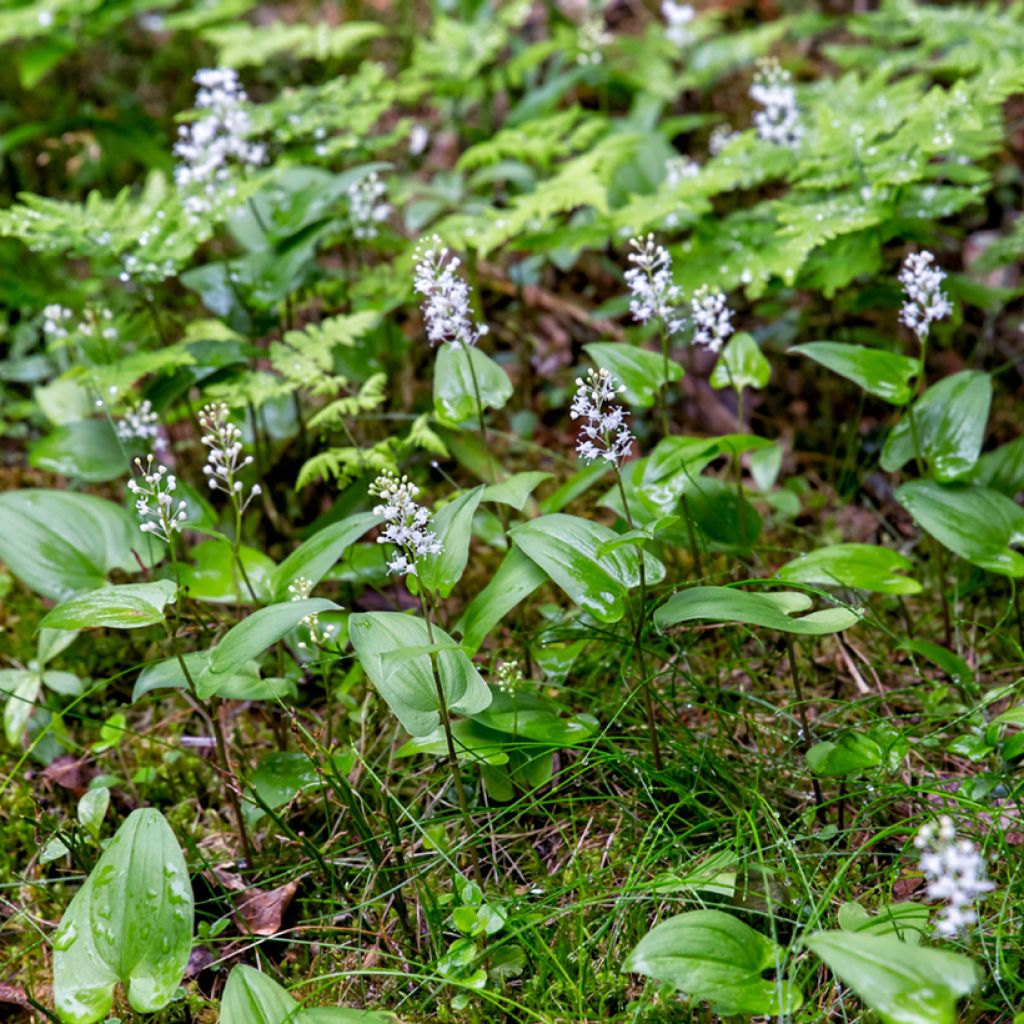

Maianthemum bifolium
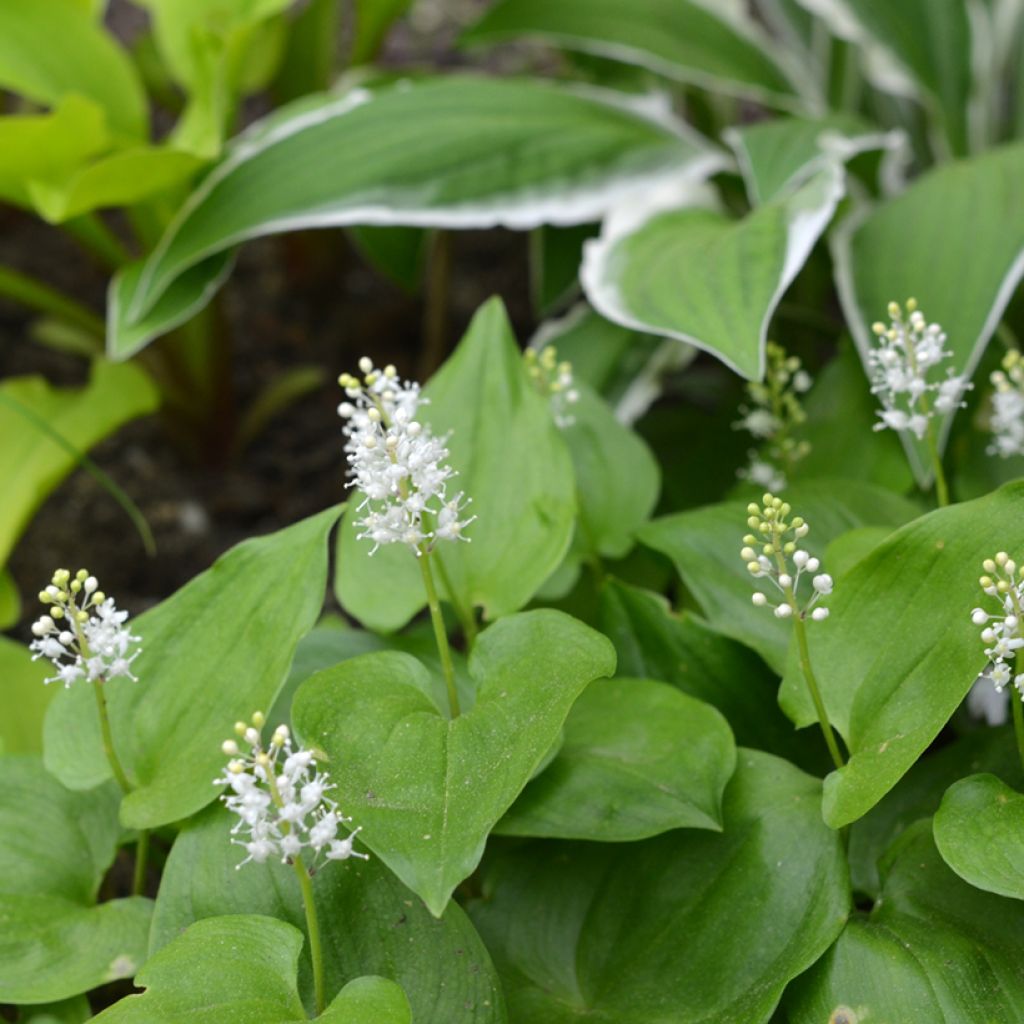

Maianthemum bifolium
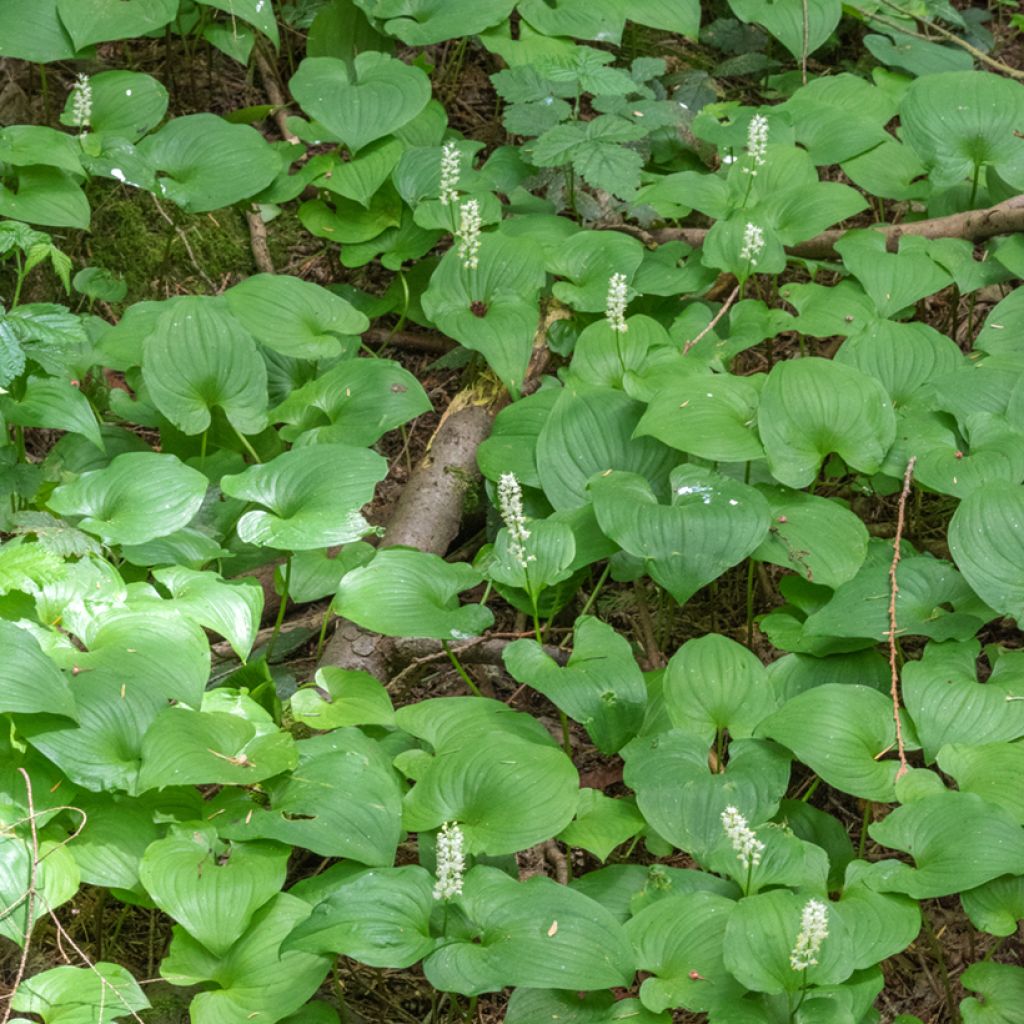

Maianthemum bifolium
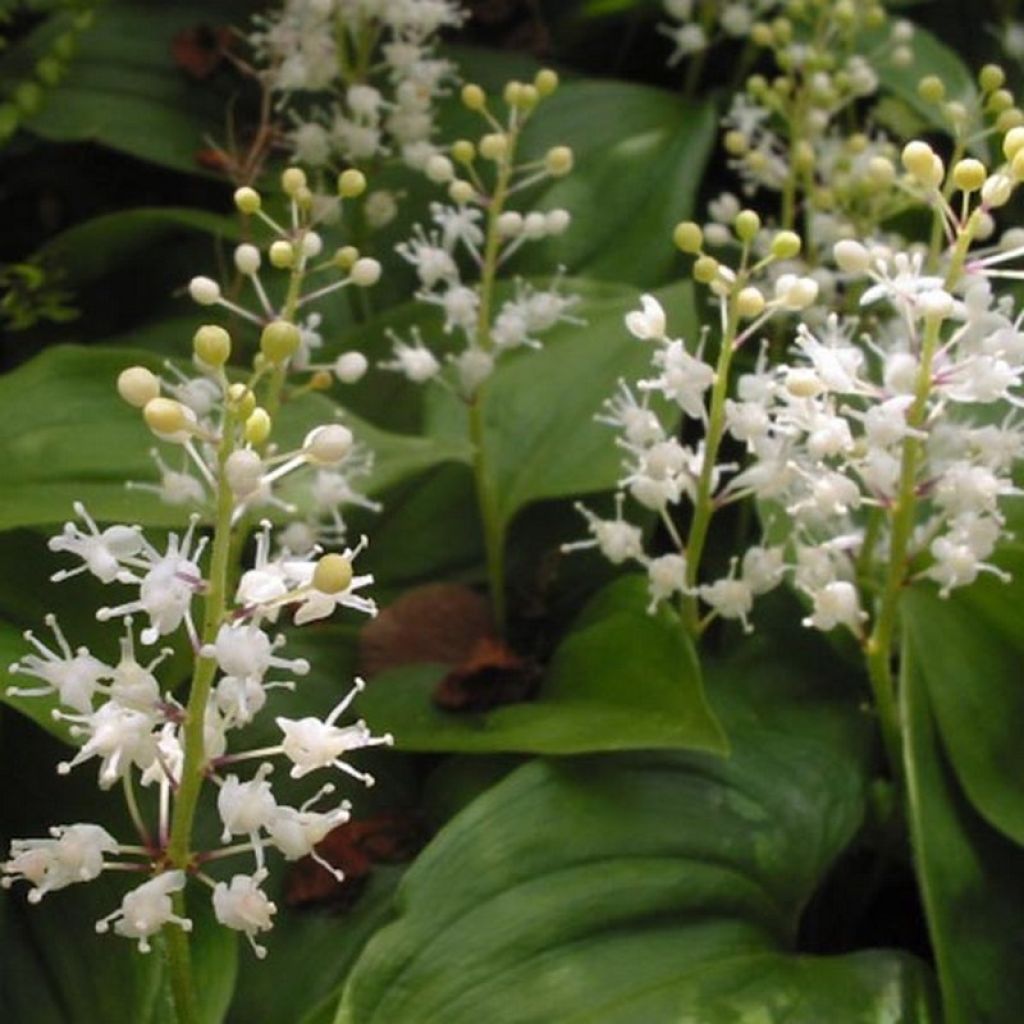

Maianthemum bifolium
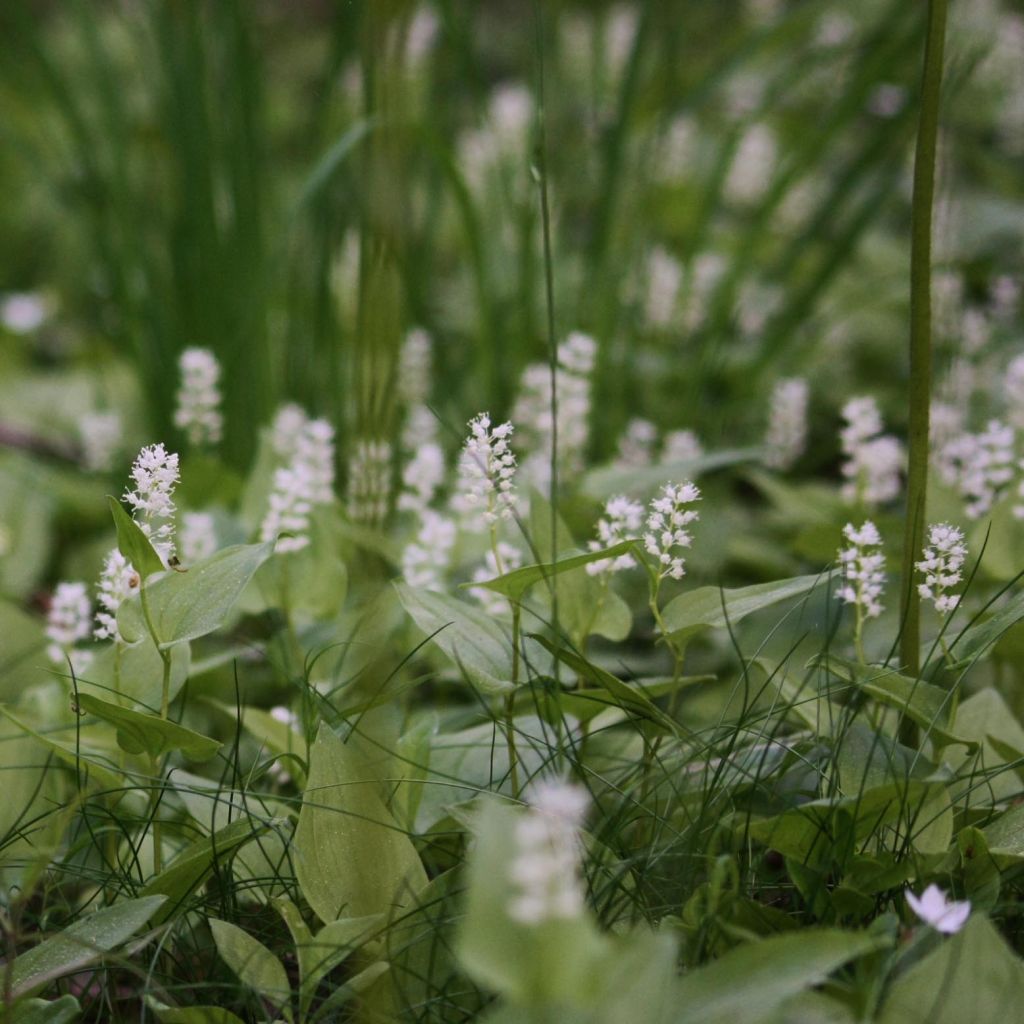

Maianthemum bifolium
Maianthemum bifolium
Maianthemum bifolium
Two-leaved False Lily of the Valley, May lily, Mayflower, Wild lily of the valley
Why not try an alternative variety in stock?
View all →This plant carries a 12 months recovery warranty
More information
We guarantee the quality of our plants for a full growing cycle, and will replace at our expense any plant that fails to recover under normal climatic and planting conditions.
From €5.90 for pickup delivery and €6.90 for home delivery
Express home delivery from €8.90.
Does this plant fit my garden?
Set up your Plantfit profile →
Description
Maianthemum bifolium, also known as the two-leaved false lily of the valley or small lily of the valley, is a perennial ground cover similar to lily of the valley that is sometimes found in our undergrowth. Unlike the latter, it most often thrives on acidic and cool to moist soils. Even more vigorous than lily of the valley, it quickly colonises the soil, adorning it with large shiny leaves, and comes to life in spring with an abundant white flowering, sadly devoid of fragrance. Ornamental and low-maintenance, it is an ideal plant on the edge of undergrowth or under large deciduous trees.
Maianthemum bifolium belongs to the Asparagaceae family. It is native to Northern and Western Europe. Its natural habitat usually corresponds to chestnut and coniferous undergrowth. It is an herbaceous perennial plant with rhizomes, whose deciduous growth starts in spring and disappears in winter. The plant eventually forms a beautiful ground cover, reaching a height of 25 to 30cm (10 to 12in) and a minimum width of 50cm (20in), depending on the richness of the soil it grows in.
In spring, segmented stems with quadrangular cross-sections emerge from the stump. They are adorned with wide heart-shaped leaves with undulating margins. They are shiny and bright green on top, hairy on the underside, and traversed by prominent parallel veins. They are arranged alternately and have a thin petiole. Flowering occurs in May and June. Beautiful white spikes measuring 10 to 15cm (4 to 6in) unfold at the end of the stems, adorned with numerous small flowers with 4 petals and prominent stamens, measuring 6mm in diameter. After pollination, small globular berries form. They are initially green and become red and shiny when ripe. This plant has the same toxicity as lily of the valley.
Maianthemum bifolium is an excellent plant for cool shade. It is vigorous, long-lasting, and adaptable to many regions. This perennial is not hindered by the competition of tree and shrub roots. It is valuable for landscaping areas of the garden that are often difficult to vegetate. Plant it alongside periwinkles, nodding perennial geraniums, and lesser celandines, as well as Speirantha convallarioides, Smilacina racemosa, Deinanthe caerulea and Viola elatior which all appreciate the same environments and make excellent companions for this false lily of the valley.
Report an error about the product description
Maianthemum bifolium in pictures
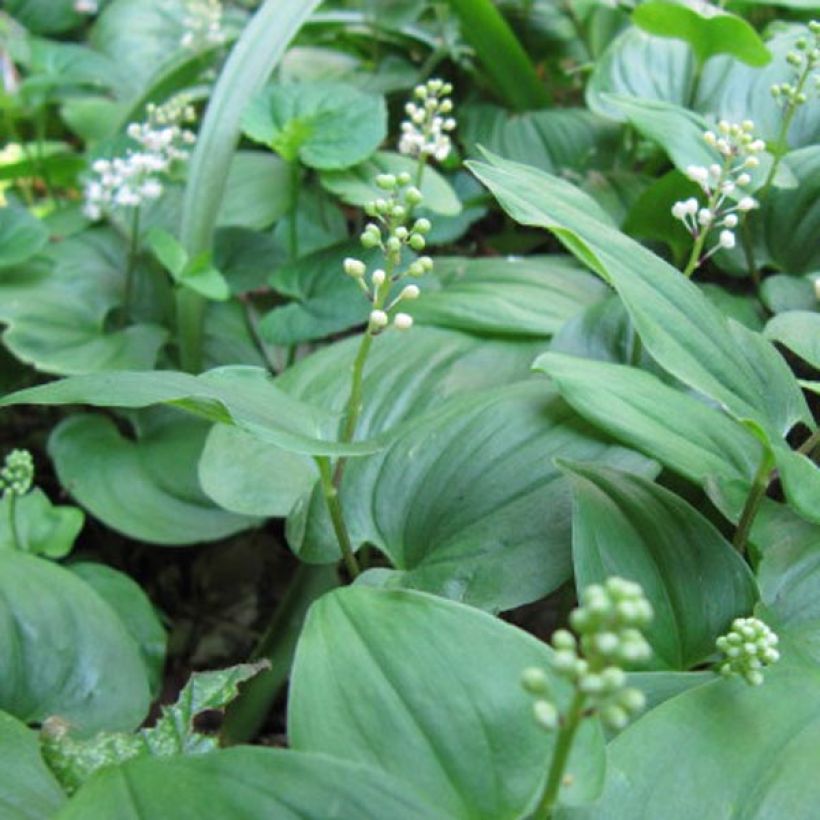

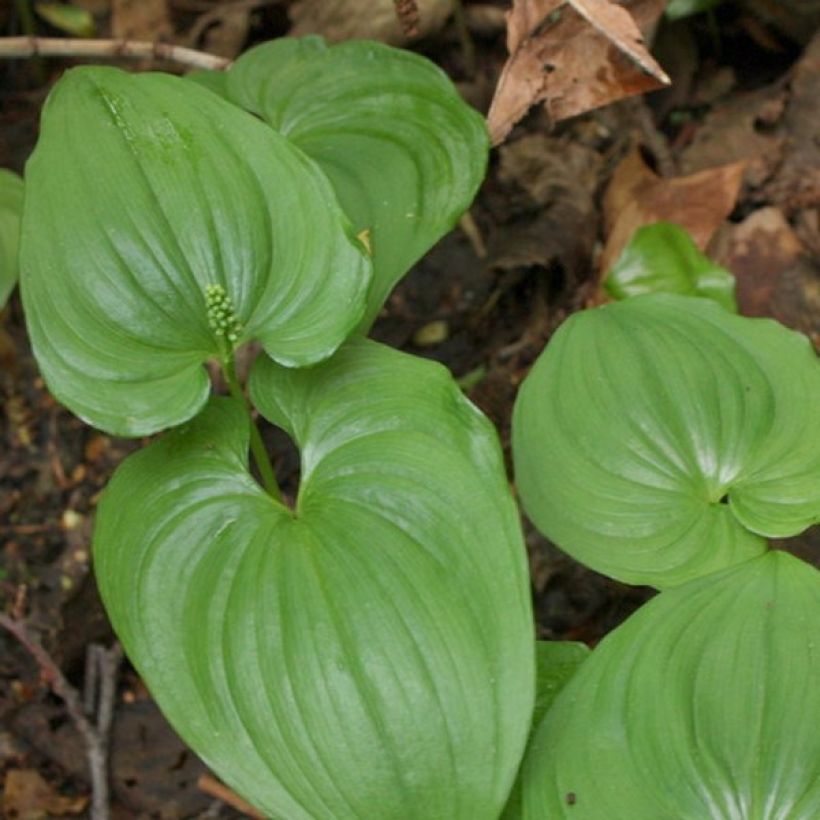

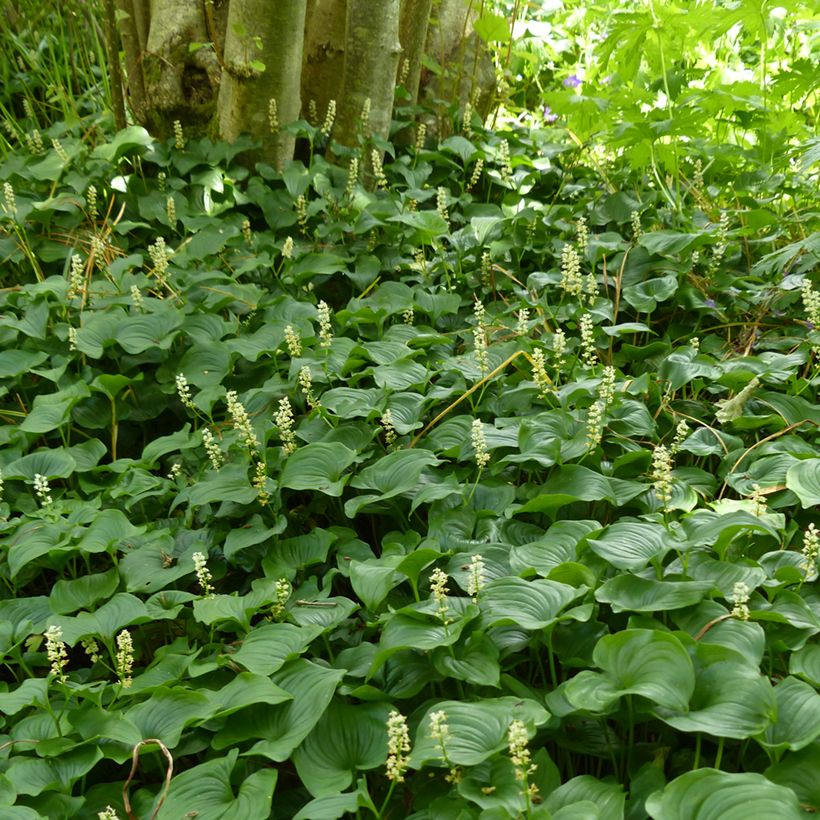

Flowering
Foliage
Plant habit
Botanical data
Maianthemum
bifolium
Convalariaceae
Two-leaved False Lily of the Valley, May lily, Mayflower, Wild lily of the valley
Western Europe
Other Perennials A to Z
Planting and care
Maianthemum bifolium thrives in fresh to damp undergrowth, but it also tolerates occasionally dry soil in summer if shaded. It clearly prefers soils that are slightly acidic, rich in humus, or even clayey. Plant it in spring or early autumn, in well-tilled and enriched soil. Protect it from competition with other wild plants to help it establish. Water well at planting and for a few weeks afterwards, and then only in case of prolonged drought.
Planting period
Intended location
Care
This item has not been reviewed yet - be the first to leave a review about it.
Shade-loving perennials
Haven't found what you were looking for?
Hardiness is the lowest winter temperature a plant can endure without suffering serious damage or even dying. However, hardiness is affected by location (a sheltered area, such as a patio), protection (winter cover) and soil type (hardiness is improved by well-drained soil).

Photo Sharing Terms & Conditions
In order to encourage gardeners to interact and share their experiences, Promesse de fleurs offers various media enabling content to be uploaded onto its Site - in particular via the ‘Photo sharing’ module.
The User agrees to refrain from:
- Posting any content that is illegal, prejudicial, insulting, racist, inciteful to hatred, revisionist, contrary to public decency, that infringes on privacy or on the privacy rights of third parties, in particular the publicity rights of persons and goods, intellectual property rights, or the right to privacy.
- Submitting content on behalf of a third party;
- Impersonate the identity of a third party and/or publish any personal information about a third party;
In general, the User undertakes to refrain from any unethical behaviour.
All Content (in particular text, comments, files, images, photos, videos, creative works, etc.), which may be subject to property or intellectual property rights, image or other private rights, shall remain the property of the User, subject to the limited rights granted by the terms of the licence granted by Promesse de fleurs as stated below. Users are at liberty to publish or not to publish such Content on the Site, notably via the ‘Photo Sharing’ facility, and accept that this Content shall be made public and freely accessible, notably on the Internet.
Users further acknowledge, undertake to have ,and guarantee that they hold all necessary rights and permissions to publish such material on the Site, in particular with regard to the legislation in force pertaining to any privacy, property, intellectual property, image, or contractual rights, or rights of any other nature. By publishing such Content on the Site, Users acknowledge accepting full liability as publishers of the Content within the meaning of the law, and grant Promesse de fleurs, free of charge, an inclusive, worldwide licence for the said Content for the entire duration of its publication, including all reproduction, representation, up/downloading, displaying, performing, transmission, and storage rights.
Users also grant permission for their name to be linked to the Content and accept that this link may not always be made available.
By engaging in posting material, Users consent to their Content becoming automatically accessible on the Internet, in particular on other sites and/or blogs and/or web pages of the Promesse de fleurs site, including in particular social pages and the Promesse de fleurs catalogue.
Users may secure the removal of entrusted content free of charge by issuing a simple request via our contact form.
The flowering period indicated on our website applies to countries and regions located in USDA zone 8 (France, the United Kingdom, Ireland, the Netherlands, etc.)
It will vary according to where you live:
- In zones 9 to 10 (Italy, Spain, Greece, etc.), flowering will occur about 2 to 4 weeks earlier.
- In zones 6 to 7 (Germany, Poland, Slovenia, and lower mountainous regions), flowering will be delayed by 2 to 3 weeks.
- In zone 5 (Central Europe, Scandinavia), blooming will be delayed by 3 to 5 weeks.
In temperate climates, pruning of spring-flowering shrubs (forsythia, spireas, etc.) should be done just after flowering.
Pruning of summer-flowering shrubs (Indian Lilac, Perovskia, etc.) can be done in winter or spring.
In cold regions as well as with frost-sensitive plants, avoid pruning too early when severe frosts may still occur.
The planting period indicated on our website applies to countries and regions located in USDA zone 8 (France, United Kingdom, Ireland, Netherlands).
It will vary according to where you live:
- In Mediterranean zones (Marseille, Madrid, Milan, etc.), autumn and winter are the best planting periods.
- In continental zones (Strasbourg, Munich, Vienna, etc.), delay planting by 2 to 3 weeks in spring and bring it forward by 2 to 4 weeks in autumn.
- In mountainous regions (the Alps, Pyrenees, Carpathians, etc.), it is best to plant in late spring (May-June) or late summer (August-September).
The harvesting period indicated on our website applies to countries and regions in USDA zone 8 (France, England, Ireland, the Netherlands).
In colder areas (Scandinavia, Poland, Austria...) fruit and vegetable harvests are likely to be delayed by 3-4 weeks.
In warmer areas (Italy, Spain, Greece, etc.), harvesting will probably take place earlier, depending on weather conditions.
The sowing periods indicated on our website apply to countries and regions within USDA Zone 8 (France, UK, Ireland, Netherlands).
In colder areas (Scandinavia, Poland, Austria...), delay any outdoor sowing by 3-4 weeks, or sow under glass.
In warmer climes (Italy, Spain, Greece, etc.), bring outdoor sowing forward by a few weeks.

































